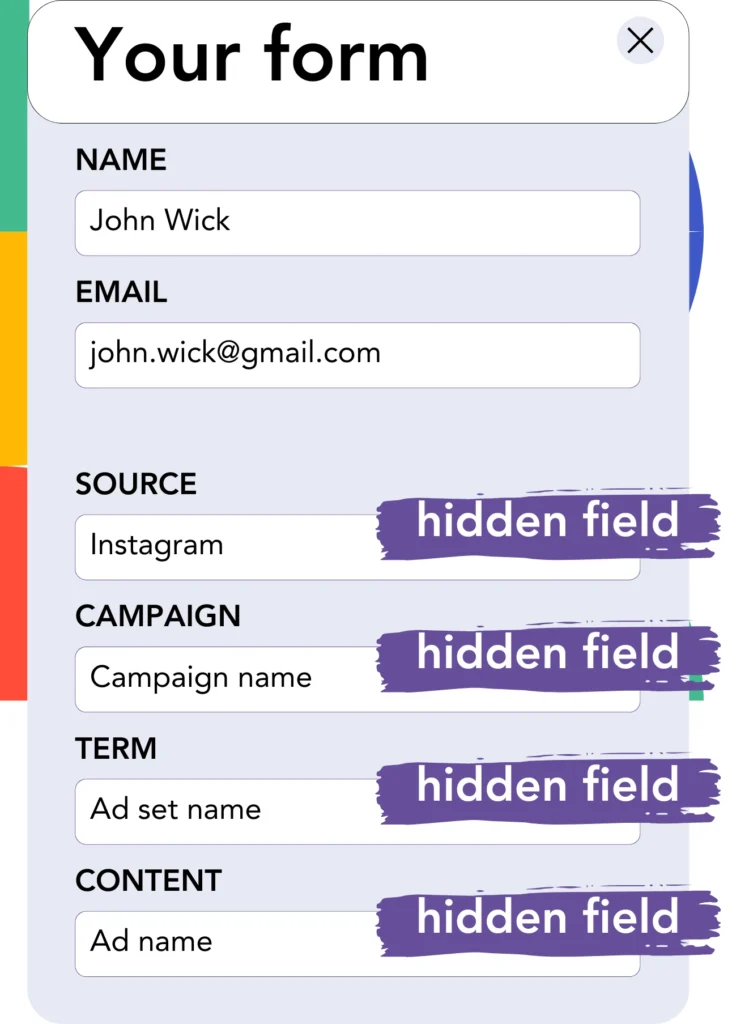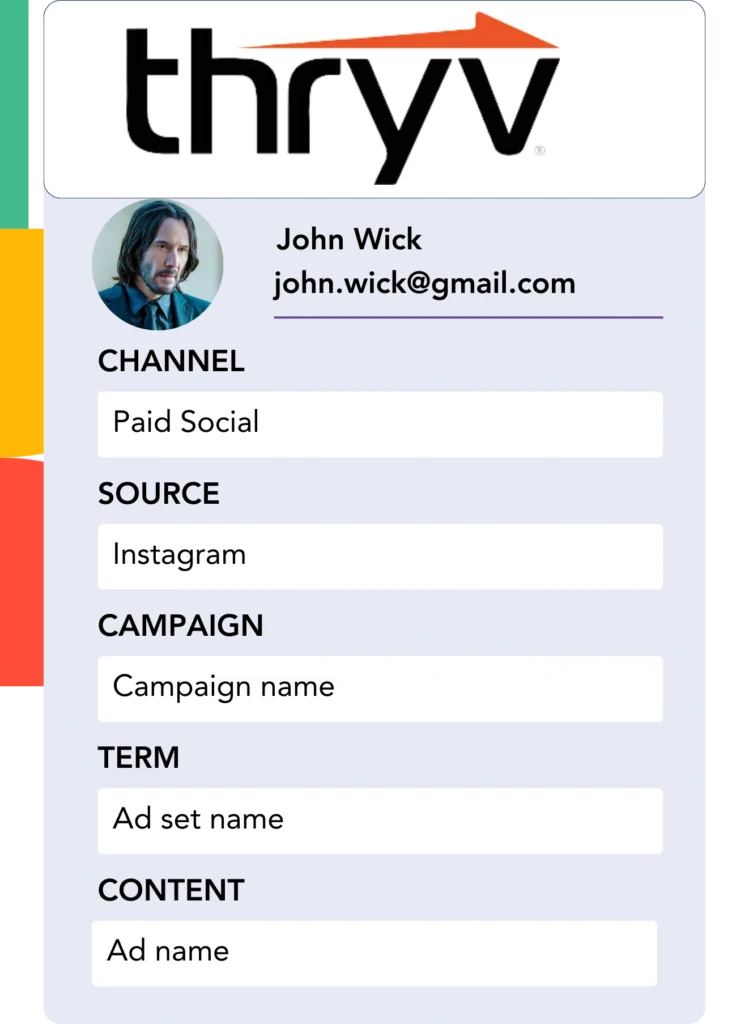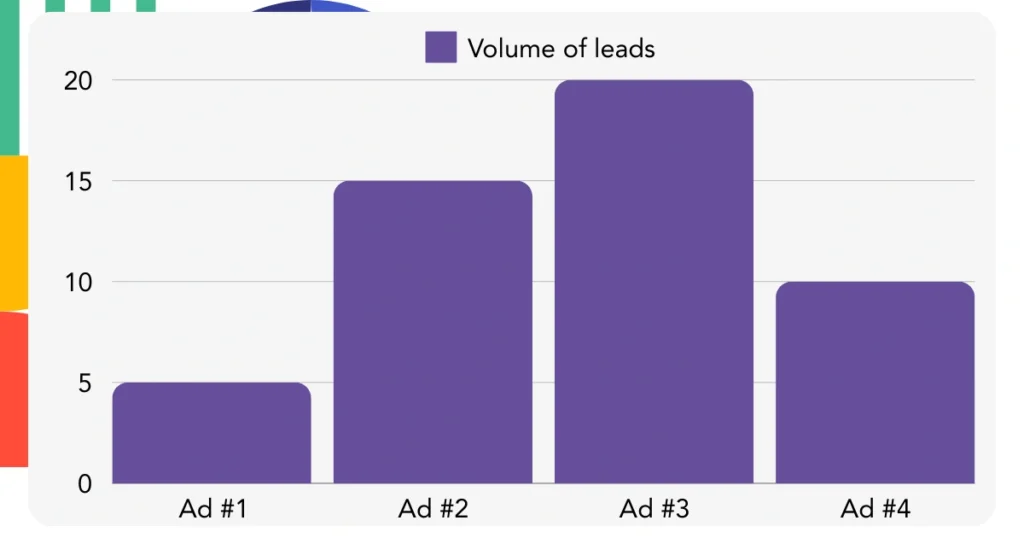Leads are transferred to Thryv CRM; however, information regarding their source channels is not included.
Likewise, when a lead becomes a customer, there is no connection to the specific ad or channel that initiated their lead status.
Without proper tracking, measuring your marketing outcomes becomes a challenge, leaving it unclear which sources deliver leads, sales, and revenue. Consequently, your investment in marketing lacks insight into its returns.
Luckily, you can directly connect leads and sales to their specific source channels.
Let’s navigate this together, step by step!
How to track the source of leads in Thryv CRM
Step 1: Add Leadsources in your website

Leadsources is an essential tool for lead tracking. Add it to your website to gather up to 7 types of information about each lead source:
- Channel
- Source
- Campaign
- Term
- Content
- Landing page
- Landing page subfolder
➡️ Sign up to Leadsources.io for free
➡️ Add the Leadsources tracking code to your site
Step 2: Add the hidden fields in your form

Hidden fields are invisible form inputs that carry key data to the server upon form submission.
Hidden fields store data captured by Leadsources, and Leadsources ensures they’re correctly populated during form submissions.
Step 3: Send lead source data to Thryv CRM

The lead source information collected from your form builder can be automatically sent to Thryv CRM for processing.
You can easily monitor where your leads, sales, and revenue come from, all within Thryv CRM.
This allows you to see the direct correlation between your marketing activities and sales results.
➡️ Send lead source data to Thryv CRM
How does Leadsources work?
When someone visits your website, Leadsources retrieves the lead source data and fills it into the hidden fields of your form. After the form submission, this data, along with lead name and email, is sent to Thryv CRM.
Leadsources monitors each lead’s source and stores the corresponding data:
| Lead source data | Fetched automatically |
| Channel | ✅ |
| Source | ✅ |
| Campaign | ✅ OR use UTM_campaign |
| Content | UTM_content parameter is required |
| Term | UTM_term parameter is required |
| Landing page | ✅ |
| Landing page subfolder | ✅ |
If UTM parameters aren’t applicable—like in organic Google search or when your site is referenced in an article—Leadsources still collects and tracks the lead source data:
✅Channel
✅Source
✅Campaign
✅Landing page
✅Landing page subfolder
Unlike other platforms, Leadsources provides lead source tracking across both organic and paid channels.
Performance reports: Lead, sales, and revenue by source
By collecting and tracking lead source data in Thryv CRM, you can generate valuable performance reports, such as:
- Leads, sales, and revenue by channel
- Leads, sales, and revenue by source
- Leads, sales, and revenue by campaign
- Leads, sales, and revenue by term (e.g. keyword or adset)
- Leads, sales, and revenue by content (e.g. ad)
- Leads, sales, and revenue by landing page
- Leads, sales, and revenue by landing page subfolder
This allows you to better align your marketing budget with the channels, sources, campaigns, terms, and content that deliver the most valuable leads, sales, and revenue.
Now, let’s explore the types of reports you can create.
1. Lead source reports
Develop reports that measure the number of leads coming from:
- Channel
- Source
- Campaign
- Term (e.g. keyword or adset)
- Content (e.g. ad)
- Landing page
- Landing page subfolder
Example #1: Leads by channel
This report gives you insights into the most effective channel for lead generation.

Example #2: Leads by campaign
This lets you focus on a specific lead source (e.g., Google Ads) and track lead generation success by campaign.

Example #3: Leads by keyword and ad
After discovering the campaign that yields the most leads, you can investigate which keyword ad is contributing to those outcomes.

2. Sales and revenue source reports
Once we’ve identified which channels, sources, campaigns, and content generate leads, we now need to determine if they convert into sales and revenue.
To complete the process, forward your leads to Thryv CRM. This will enable you to track sales and revenue across various sources, campaigns, channels, terms, content, and landing page subfolders.
Using this data, you can concentrate your marketing strategy on the channels, sources, campaigns, keywords, and ads that deliver the best results in terms of sales and revenue.
Creating various reports on sales and revenue is possible, including:
- Sales and revenue by channel
- Sales and revenue by source
- Sales and revenue by campaign
- Sales and revenue by term (e.g. Keywords)
- Sales and revenue by content (e.g. Ads)
- Sales and revenue by landing page
- Sales and revenue by landing page subfolder
To illustrate with an example, let’s consider this scenario:
| Channels | Search Paid | Social Paid |
|---|---|---|
| Leads | 50 | 75 |
| Sales | 5 | 6 |
| Avg. Order Value | $150 | $100 |
| Revenue | $750 | $600 |
Following the launch of Google Ads and Facebook Ads Manager campaigns, the “Leads by Channel” report showed that Social Paid ads on Facebook brought in more leads than Search Paid ads on Google.
After analyzing the sales and revenue data in Thryv CRM, it became clear that the Search Paid channel was more profitable than the Social Paid channel, generating higher revenue with fewer leads. Based on this insight, the marketing budget was adjusted accordingly.
